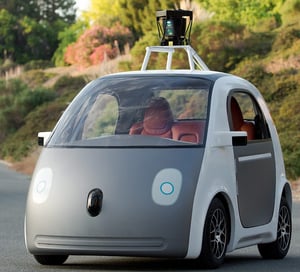The Office Automation System Checklist | Digital Visitor Log Book
Small businesses can use office automation to increase worker productivity. This article covers the criteria for choosing effective automation...
A look into the future of work and the office as technology and connectivity have even greater influence on our professional lives
What will working in an office be like in 2030? In ten years, a lot can change. It has only been 12 years since the first iPhone hit the market, changing mobile phones into mini-computers virtually overnight. Now they are everywhere. With automation likely to take over a lot of repetitive office tasks, and mobile workstations becoming far more commonplace, the office worker will experience work in a whole new way. Most people seek meaning and personal fulfillment in work. Will automation, mobility and other innovations help people, or hinder them?
There are a number of people waving red flags about how automation is going to cause massive job loss. Figures range from 38% to 6%, with Forrester predicting a net loss in the USA of 7% by 2027. Interestingly, however, McKinsey argues that, while jobs won’t necessarily be lost, they will merely change, McKinsey’s research shows that certain tasks from many workers can be automated, but humans are still very necessary for other tasks. Work requiring emotional connection with people and creativity is not easy to automate.
Business Insider suggests that embracing automation could actually make work more “human.” By freeing up the time workers are spending on drudgery or easily automated tasks, human beings can take more time making valuable connections. The work that humans can do in the time gained by automating other tasks include:
Consider reception: in the past, a receptionist would spend valuable time registering a guest, then looking up the host’s contact information, calling and/or emailing the host and maybe even retyping a handwritten visitor log into a database. Digital visitor sign-in apps can automate all those tasks. While the guests check in using the self-serve kiosk, the receptionist could be:
All of these activities are helpful to the organization, causing the receptionist to be more valuable as opposed to less valuable.
If work is filled with less drudgery, work actually becomes more fulfilling for those in the office. They can spend less time answering repetitive emails and completing boring tasks, and more time connecting with their coworkers. Collaborating to solve problems, creating new products and connecting with others makes work a far cry from just something people do because they need a paycheck.
The nature of the office is already changing. With the invention of the laptop computer and wireless internet connections, being tied to a particular workstation is no longer a requirement. While your computer may need the occasional recharge, all that requires is an outlet. What does that mean for workers?
Having the ability to work almost anywhere causes a change in the dynamic of the workplace. In 2030, we’re likely to see an interesting combination of flexible, mobile workstations and remote working, and fewer formal offices.
People love mobility. Many people would like to have the opportunity to work from home, at least occasionally. Remote working has several benefits:
Big companies, like Google and IBM, discourage or limit telecommuting (i.e. working from home) because fewer people in the office mean fewer people meeting face-to-face and connecting. While online video meetings and chats can alleviate this to some extent, there is something to be said for informal encounters that build connections. It is a lot harder to have an informal chat with someone who is working from home. There is no virtual water cooler.
On the other hand, many organizations are recognizing that formal offices can also impede these relationships. Some are redesigning their offices to include more informal, flexible spaces, where anyone can work at any workstation. Furniture can be reconfigured for meetings as needed. Teams can form and disband based on individual projects. Other organizations are taking advantage of coworking spaces that have already been designed to foster relationships. These large companies are leasing whole buildings or wings instead of owning their own buildings.
Mobile workstations offer their own challenges. In coworking spaces and flexible enterprise offices alike, it can be difficult for visitors to locate the person they came to see. The receptionist – if there is one – may not know where an employee is working from day-to-day if there are no designated offices. A digital visitor management system that notifies hosts may become much more commonplace, as it alleviates this problem.

All this flexibility will require innovation on the part of both the workers and the organizations in order to keep up with the rapidly changing world.
As automation takes over the responsibilities for whole jobs or portions of jobs, workers will be required to learn new skills in order to stay relevant. The pace of change is quick, and jobs themselves change just as quickly. It is advised that workers continually learn new skills in order to make themselves more valuable.
Not only will workers need to continually learn for themselves, but organizations will likely find themselves needing to train people. Most of the skills that cannot be replaced by machines are high-level skills: communicating, people skills, or specialized fields. The jobs that will grow are at the high-end of the wage spectrum.
We’ve already seen a communication revolution in the last 10 years. The next 10 will see us adjusting what we’ve learned for continual flexibility. Flexible workspaces and flexible schedules will require people to set boundaries about when they can be contacted. Organizations and employees both will need to have explicit guidelines and conversations about integrating work with everyday life.
As remote working continues to rise, and even if workers just have the opportunity to choose their own workspace within an office, methods of communication will need to evolve as well. There will be even more use of video calls, instant messaging/chat/text. This requires high-level communication skills to avoid misunderstanding.
In this flexible environment, it can be significantly more difficult to build connections. Several different types of relationships are affected.
Organizations are going to have to be even more deliberate in making space for relationships among their employees and leaders. Leaders are going to have to go out of their way to spend time with and connect with employees in meaningful ways. Organizations may have to consider organizational social gatherings during paid time. Considering policies that encourage remote working, but limiting remote time to only a portion of total work time may be beneficial. Other options might include offering incentives to come into the office, or making the office more inviting. Quiet areas for individual work may help stimulate productivity in the same way that working from home accomplishes, while still having common areas for chatting.
Customers and clients who aren’t physically coming to your office don’t have the same sense of place or identity that can be fostered in that way. Company branding and building a consistent message will be incredibly important. Organizations will need to make sure employees across all walks are utilizing this branding and sending the same, unified message.

The changes in how connected employees are have impacted the efficiency with which important conversations are being had. Though conference technology has certainly improved over the years, the advent of virtual reality (VR) will make conference calls even more interactive in 2030. Presenting detailed graphs and PowerPoint presentations will be easier and more efficient than ever. With technology that is more streamlined and less cumbersome, more people will be able to use this important technology to communicate anywhere in the world as if they were there in person.
Offices have continued to adopt ways to make their space more conducive to promoting a healthy and efficient work environment. Companies such as Google and Apple have begun implementing new workspaces which promote relaxation such as nap pods and micro-refrigeration for food and beverages. By 2030, these technologies could be adopted more globally and improved, providing new conveniences like individualize ambient music or meditative break rooms which provide office workers motivation and help relieve stress.
As software capability increase over time, the way in which office workers make decisions will change. Though we may not have true artificial intelligence in 2030, we will have the capability to use algorithms to make competent and informed decisions in mere seconds. Just inputting details of a problem or conflict into a program could give employees an efficient way of solving problems and enable them to get back to the tasks that would benefit from their time and effort.
With the changes in cultural values that are happening all the time, it is safe to assume that the way people interact in the workplace will be changing over the next decade. In 2030, the office space will be more diverse than ever as more forms of objective hiring processes will begin to be implemented universally across many fields. This will ultimately add value to the workplace as a way for people to engage with a variety of groups and include diverse perspectives that impact how decisions are made in the office environment.

With the rise of ride-sharing services such as Uber and Lyft, traveling from one point to the next is now more flexible than ever. New improvements in the field of self-driving automobiles could be a major leap in time-saving while people commute to the office. Imagine the convenience of having the privacy of a single-occupant vehicle and the convenience of a self-driving car. In merely a decade this could be the reality of how we get to the office. Magnitudes of speed beyond that might be possible thanks to The Boring Company or technologies that have not even been conceived of yet.

So let’s imagine what working in this new office will be like.
Susan walks in the door without even scanning an ID badge. The geolocator in her pocket/cell phone registers with the organization that she’s arrived. She puts her lunch in the communal frig, knowing that it will only show her own meal when she returns, so no one will have stolen it. She finds a desk near a window where she can work for the day, and pops open a company-owned computing device programmed to only show her documents and preferences.
Joe shows up, and they chat for a while on a project they’ve been working on, and about their families. Pretty soon, it is time for a meeting. Instead of moving to a conference room, three other employees join them in their space, where the desks reconfigure to a conference table with the push of a button. A sixth employee works remotely from their home, or halfway across the globe, via 3D hologram video conference. The meeting they are attending was scheduled for them automatically by the AI of the virtual assistant scheduler. It coordinated schedules, the meeting room, and ordered everyone preferred lunch.
Following the meeting, Susan logs on to an employer-sponsored learning program designed to increase her skills in a field the company expects to need in the coming months. When her training is over, her direct supervisor is notified, and a meeting is automatically scheduled for the two of them to review progress and discuss what is next.
The workday continues after lunch when Susan receives a text from the organization’s visitor sign-in app that an important client has arrived. The two meet in the courtyard, collaborating on a digital project while each working on their own laptop.
Once the work is done, Susan takes part in an employer-sponsored coffee break. Designed to connect employees informally, this event occurs in the communal coffee shop.
Even though it is only 2 p.m., Susan leaves the office. She clocks in again at home at 7:30 p.m. completing some complex tasks that required utter quiet. (She could have reserved a quiet pod at work, but preferred leaving work early to run a few errands.)
The world of work is continually changing. In 2030, we’re likely to see incredible flexibility of work schedules and work location. Work itself will be more challenging and meaningful as automation takes over repetitive tasks. All of this change will require tremendous innovation and deliberate strategy on the part of workers and organizations. However, in the end, we may end up with a workforce that is more productive and fulfilled.
Self-driving car photo courtesy of smoothgroover22
Small businesses can use office automation to increase worker productivity. This article covers the criteria for choosing effective automation...
This article reviews how humans and office automation will work together to maximize workplace productivity.
While many people in developed countries fear AI and automation, these same groups are facing population declines. Will automation save economies?